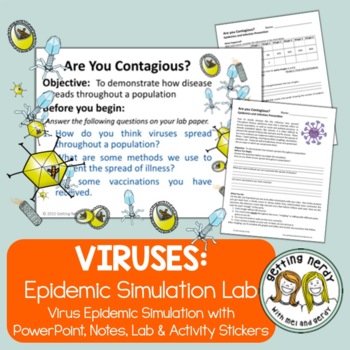Virus Lab - Epidemic Simulation Activity
- Zip
What educators are saying
Description
Virus Lab - Epidemic Activity - PowerPoint and Handouts.
In this classification activity, students simulate a virus epidemic lab using a party scenario and virus and vaccine stickers. This is a relevant activity when discussing influenza or corona covid-19 virus. This product is also found in our Life Science Curriculum Classification Unit Bundle and goes well with our Virus Public Service Announcement Project and Virus STEAM Lab Stations.
What students do:
* Simulate a school party where several students are "infected" with the stomach virus.
* Simulate what happens when members of the population become vaccinated against the illness.
* Analyze their results, graphing their data in their student response sheet.
Consider using this with some of our other products in our store:
- Classification Vocabulary Lesson
- Classification Cootie Catcher Study Tool
- Classification Interactive Notebook Six Kingdoms Puzzle
Click this link to find out how this lesson fits with your NGSS, TEKS or GSE Science Classroom
Getting Nerdy's Terms of Use (TOU):
- Purchase of the product is for single classroom use by the purchaser only. It is a violation for individuals, schools, and districts to redistribute, edit, sell, or post this item on the Internet or to other individuals. Disregarding the copyright is a violation of the Digital Millennium Copyright Act and subject to legal action.
-By purchasing this product you acknowledge that you have read and understood the Terms of Use.
Classification: Are you Contagious Virus Epidemic Lab by © 2015 Getting Nerdy





